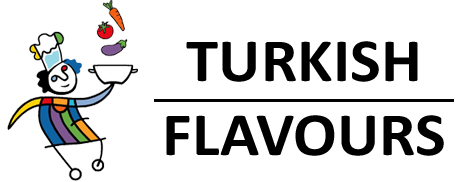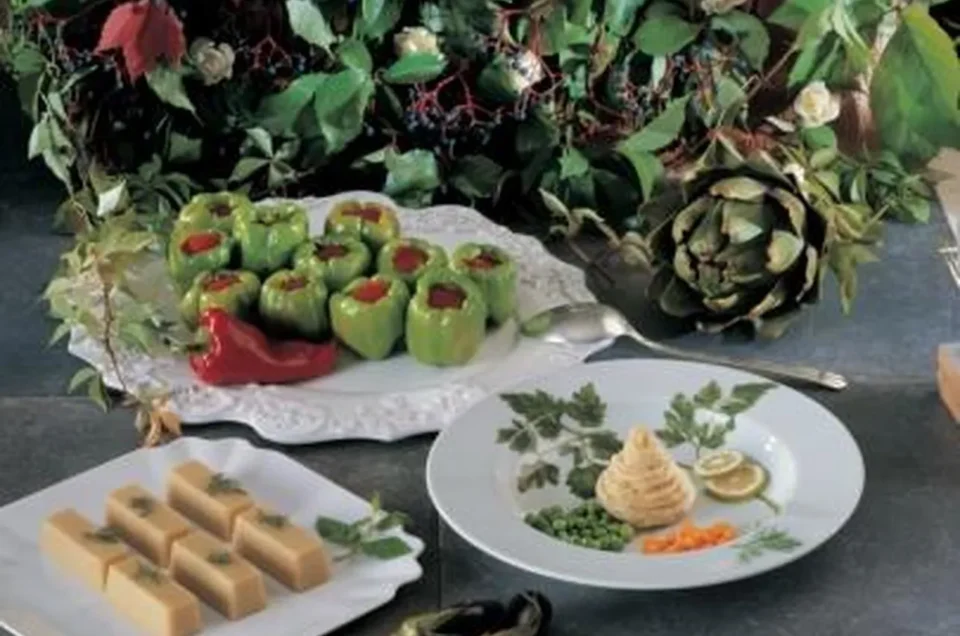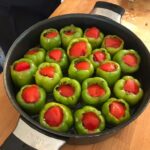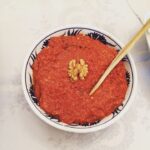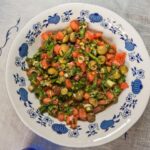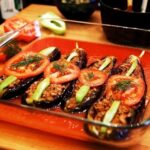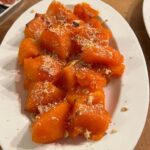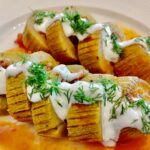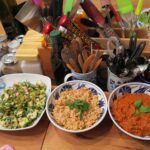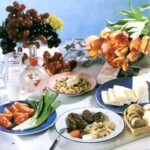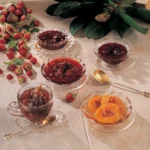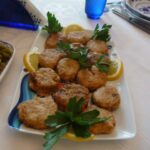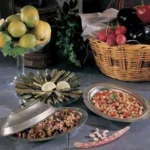URLA
The history of Urla goes back to 3000 BC. Founded as a result of the Dorian and Achaean migrants to this region by the Ionians, the town was ruled by the Persians, Greeks, Romans, Byzantines, Seljuks and Ottomans respectively.
One of the twelve Ionian cities, Clazomenai was founded in the area just in front of the modern Urla Quay. It was then moved to the island off the quay for protection purposes against the Persian attacks. Of the city which has been proven to have been founded centuries before the Hellenic civilisation through archaeological findings, the coastal parts were called Clazomenai and the inland parts Vourla. Wine production started in Urla in the 4th millennium BC.
The people of the city then erected olive oil mills (oldest olive oil workshop excavated on earth is in Urla), produced perfumes and also erected workshops for weaving.
GAZIANTEP
Traditional Food and Life Through the Eyes of the Elderly- presented at The Fifth International Turkish Folk Culture Congress,1996, Ankara
By courtesy of FİLİZ HÖSÜKOĞLU
Some historians, food writers, anthropologists or people from other backgounds are doing research on theirs or a different culture’s cuisine. After being involved with so many food related activities, I decided to do some research in my hometown of Gaziantep. I asked people who were over 50 and were born and still living in Gaziantep if they would asist me in my research. The people chosen were representatives of different economic and social backgrounds. But there was one common factor; all of those involved loved traditional cooking and the traditional ways of life.
Gaziantep is one of the oldest living cities in the world. Its is situated on the Silk Road which connected routes from Europe to the East and Middle East. On this road there used to be caravans carrying travelers, loads of spices and foodstuffs and other precious articles. The inns along the way served such a variety of people. This coming and going over the centuries has given dynamism to Gaziantep, its cuisine and the traditional ways of life.
According to one source, Gaziantep cuisine is a story of yogurt, lamb and sheep meat, kavurma (fried chopped meat) which is prepared by the family members in the winter, emerald green pistachio nuts; wheat and its derivatives; legumes, especially mung beans; green olives; seasonal fruit and vegetables, especially green almonds and green plums, natural seasonings such as sumac and pomegranate molasses; milk and its by-products, especially clarified butter…that is almost everything.
Since cooking is an essential part of life, when interviewing I was interviewing I not only got information about cooking, but also about the local traditions, beliefs and customs. They are so intermingled that the concepts cannot be considered separately. So I will you about both cooking and the traditional life.
When I asked about some special, as opposed to everyday dishes, people started to recall other accompanying dishes that go with that special dish. Stuffed meat kibbeh is served with chicken broth soup; saffron – flavored rice stuffed pastry is served with aşure (Noah’s puding), some legume-grain based soups are served with grape molasses or season fruit jams. More dishes can be added to this list, but these are enough to show the harmonious and nutritious friendship existing between certain dishes for centuries.
Although cuisine culture has its roots deep in history, it is also possible to see the effects of these roots in daily life. For example, in the morning the day starts sometimes with a rich, sometimes a humble breakfast. If there were some leftovers from dinner, these were used. If there were no leftovers, they would eat butter, various jams or grape molasses with freshly baked flat bread or they would cook soup with one of the following ingredients: lentils, mung beans, hulled wheat. When, for example, mung beans were cooked, rice was added to give a thick texture and the clarified butter was drizzled on the soup and garnished with dried enriched by adding fried meat called topaç and kavurma.
In the summer and autumn the kitchen turned into a veritable factory. In winter, there was not enough milk to be used in cooking. But in spring there was an abundance of milk. So yogurt was prepared, strained, pressed firmly to remove air bubbles, and salt added for future use.It was stored in earthenware containers.
Before winter came, two or three sheep (or one sheep and one goat, depending on the income and number of members in the family) were slaughtered. All the family members sat around big cutting boards normally used for Rolling out the dough for making flat bread, yufka, cutting the meat and separating the fat from the bones. If the family was rich enough, butcher came to help grind the meat with his hand- turned machine.A fire using wood from the vineyard was made and this chopped ground meat was put into a large special pan with a diameter of 100-120 cm. Then the frying was slowly started.When everything was properly cooked, it was left to cool a bit. While stil warm, it was rolled into balls.These meatballs were pilled into wicker baskets that were kept hanging from the kitchen ceiling.These meatballs are called topaç or kavurma. Topaç is like a ready-made dish at home. Let’s say an unexpected guest comes and you don’t have anything to serve. With topaç you have many options to offer your guest and it is very handy. Topaç has contributed much to the culinary skills of the housewives.
For lunch, a main meal was prepared if the food was sent to the husbands at their workplaces. Otherwise, a light meal, such as köfte, a type of tabbouleh, a legume or grain salad, or some vegetable dish without meat was prepared.
The old folks say, nowadays, that men are to be pitied because they have to eat in ‘second-class’ restaurants. Consequently they are prone to having health problems such as high cholesterol, high blood pressure and other similar difficulties.
Dinner was the main meal of the day. Generally relatives or close friends were invited for this meal which included all the familly members. Because of this, original receipes catered to large numbers, for example twenty people.Nowadays we have to cut them down to serve four to six people.
Gaziantep has some very special local ingredients: clarified butter, fat from the tail of sheep, and virgin olive oil.Clarified butter was used in all dishes.When topaç was prepared or on sacrifice holidays, the ground up tail of the sheep was fried seperately.This tail fat was used as cooking fat in some dishes.Virgin olive oil was only used for frying some vegetables such as potatoes, eggplants, and stuffed kibbeh. People were suspicious of hydrogenated fats because they did not know where they had come from or what they were made of.When I asked if the butter wasn’t bad for their health, they replied that they used to exercise a lot due to the scattered locations of the rooms in the house, so by working hard they burned up all the calories they had consumed.
Now let’s examine cooking for special occasions. If there was a special event such a wedding or engagement party, large quantities were cooked with friends, relatives and neighbors helping as the occasion demanded. Since they were cooking together, they had the chance to exchange cooking and household handy tips.Of course, the oldest person was the leader; the youngest was doing both the helping and carrying just like an apprentice or comi chef.In a way these pre-party gatherings were like a cooking school.
In the old days in Gaziantep the mangal (a type of hibachi or portable gril) was used as the only means of cooking. The mangal is for cooking over a charcoal fire.Every house had one or two mangals.Copper pans, coated with tin, were used.This type of cooking was somewhat unique since the heat was not very intense but always constant. Mangal-style cooking was one of the factors that enhancedthe delicious flavor of the food. After the cooking was completed, the ashes from the mangal were collected and used as a cleaning agent both for washing the dishes and doing the laundry. Such was their economical lifestyle! Now the old people say that everything is so costly. In the old days, they say everthing was abundant because of their thrifty way of life.
Gaziantep cooking is sometimes simple, sometimes complex. It is honest, yet touched with nostalgia. It is practical but at the same time it has something of an ethnic and historical flavor.
Now let me give you a few cameos of Gaziantep cooking. It is a cool, refreshing glass of fruit juice prepared in winter and served on a hot lazy summer day.It is rolls or triangles made from sheets of pressed and dried fruit juice and starch with nuts inside, shared with friends and neighbors in a wood – paneled room on a cold winter night. It is bread salad with red, juicy tomatoes, green peppers, cheese, onion and homemade red pepper flakes for a breakfast in a spring morning. It is the kibbeh prepared with fine grain bulgur with its delicious earthy smell, sweet ripe tomatoes, onions, garlic and heavenly smelling clarified butter. It is the pilaf with layers of quince, apple carrot potato and subbed meat on a cool autumn afternoon…
I much appreciate the cooks of the older generations. Most people I interviewed were traditional in their Outlook, creative, thrifty but generous. They believed in what they were doing and appreciated the generations who had lived before them. However, they also had hoped that the younger generations would protect and keep these cultural values and traditional riches by respecting them, using them and making them live for the coming generations.
THE SECRET WORLD OF BAKLAVA BY COURTESY OF FİLİZ HÖSÜKOĞLU
Like all traditional cultural cuisine, Turkish cuisine is in a process of rapid change and improvement. Gaziantep cuisine falls under the heading of Mediterranean cuisine, which is one of the world’s healthiest. The sweet component of Gaziantep cuisine is based on baklava. And that’s what I’m going to talk about today.
Gaziantep lies in the south-east of Turkey, near the Syrian border, and its location is a factor of great importance in its history. Gaziantep is situated between the Mediterranean and Mesopotamia, from where the first civilisations emerged. I t is in fact, at the crossroads of southern Turkey and the Mediterranean. From earliest times, man has found the area conducive to settlement and crop civilisation because of its proximity to the river Euphrates and its tributaries, Nizip and the Sacır. Gaziantep has been under Hittite, Assyrians, Persian, Roman and Byzantine rule. Omayyad’s ruled Gaziantep, Antakya and Aleppo together. After being a part of various kingdoms and minor states, Gaziantep fell under the rule of Aleppo and Damascus Atabeyliks.
There was considerable intermingling of eastern and western elements in the fields of culture, art and religion. Consequently and according to other sources too, there are close likeness in the field of cuisine in Gaziantep, Syria Central Asia especially in the preparation of baklava. We know that the nomadic Turks were making layered dough products as early as 11th century and Turks were fascinated by the idea of achieving layers in their breads. Lacking ovens, they were unable to make thick breads of the sort that settled people often make. The cuisine had also been influenced by Persian cookery. The word ‘lava’ has the meaning of Rolling in Arabic, and in Greece, baklava has a rolled shape, in addition to the traditional diamond form.
Baklava making processes in fact similar in Turkey, Iran, Lebanon, Jordan, Tunisia, Georgia, Azerbaijan, Uzbekistan, Syria and Greece, but in Gaziantep, it is interesting to note how the baklava makers have adapted the ingredients to their own culture, geography and nature.
First let me explain about the ingredients and the preparation of baklava.
The pastry consists of durum wheat flour, (Triticum durum), water, eggs and salt.
The filling consists of pistachio nuts and clotted cream (a mock cream could be substituted using a mixture of milk and semolina).
The syrup consists of granulated white sugar, water and lemon juice.
Modified wheat starch is used for rolling out the dough.
The clarified butter is sprinkled between each layer of baklava.
The ingredients for the pastry are mixed and made into medium stiff dough. The dough should be rolled out as thin as tissue paper, so that one can see one’s finger nails through the sheet of dough. For Rolling, a rolling pin, 1. 5 cm in diameter is used.
During the Rolling out, modified starch is sprinkled evenly between the layers. This is a very important factor in the making. If it is special starch isn’t used, the layers of the pastry will stick together. The first 15 to 16 layers are placed in baking dish and brushed with clarified butter between every second layer. After the filling has been added, the other 15 layers should be thoroughly brushed with the clarified butter. When the layers are complete, the sheets are cut into squares, diamonds or triangles. Now is the time for pouring more heated clarified butter over the top and letting the baklava stand to absorb the butter. After baking the baklava in a special oven where it is lined with black stones from Islahiye, for almost 40 minutes, it is slightly cooled and the pan is turned on its side in order to be able to drip out the excess butter. The baked baklava is reheated in order to make sure every portion moves separately within the pan. Then the boiling syrup is added to the heated baklava, making each portion jump out of the pan, thus letting a thin coating of syrup received by each portion. The hot tray is placed on a special circular ring by tilting it on its side. A perfect baklava is evenly coloured, requiring skill and experience and love in its preparation.
For baklava making, a bright, windy, chilly day is best. Since baklava is prepared all year around, the baklava makers, for best results, try to keep the room at the same temperature. The same goes for the humidity of the room. The surface of which they work should be marble. There should be no draughts or sun rays in the room. The number of people working there is also important, because each person is a heat source, and too many people would increase the temperature. In summer, each worker is supposed to shower every two hours in order to keep the room temperature and humidity constant. There should be heat insulation in the building. In older times, they used the rub the floor with blocks of ice, as, in the heat, the dough cannot be rolled out properly.
As mentioned before, the baklava flour is made from durum wheat, a very special, hard kind of wheat grown in dry soil. Using this type of wheat is essential for the pastry to develop real elasticity. Hard wheat contains greater quantities of the proteins called glutenin and gliadin which together form gluten when the flour is moistened and mixed. The wheat dough has to be very strong, so that it is firm enough after being rolled into wafer thin layers, to pass through the many intricate processes of kneading, rolling out with a certain amount of modified wheat starch, being brushed with clarified butter, baking and finally being covered with hot syrup.
The modified starch used for baklava is still produced by traditional methods in Gaziantep. The baklava makers believe that the real baklava taste comes from these long-established methods, some of which are kept a proud secret. Using these methods, the humidity ratio of the starch is carefully adjusted to prevent the dough from becoming too dry. The starch granules are so small that they sprinkle homogeneously. When you rub them between your fingers they make a special sound (cıyır cıyır). This tells you the consistency is just right.
The favourite nut of the Near East and Central Asia, the pistachio nut, has a delicate but unmistakable flavour. Its vividly green colour makes it the perfect ingredient for the baklava filling. The Gaziantep pistachio is different from other pistachios in every respect. As you will appreciate, the chemical composition of the soil, the climate, the water content and other factors have a strong effect on the quality of the pistachio. According to an analysis of the chemical composition, the local nut has 5. 5% water, 58% oil, 19% protein, 2. 8% cellulose, 2. 5% ash and 2. 5% extract without nitrogen. As we can see, the pistachio nuts are nutritious food, rich in oil and protein. Pistachio terebinthus is used as a rootstock for raising pistachio trees. The pistachio tree is resistant to extreme hot and cold, but it doesn’t like rainy and foggy wheather. On the other hand, it can be raised in calcareous, rocky and stony soils in which some other fruits cannot grow. In baklava a special nut called “boz ben (white speckle)”is used. This special type of the nut is picked early, before it is ripe. Normally 300 gr. kernel can be obtained from 1 kg. of pistachios. However, if it is harvested early, only 150 gr. of kernel is obtained. Due to the early harvesting, the oil ratio is so high that the baklava has a distinctive taste. You can taste the pistachio oil if it is prepared with the white speckle pistachio nut.
Clarified butter is brought from Şanlıurfa or the Kızkapan and Mahkanlı villages of Pazarcık, and Kahramanmaraş. It is obtained from sheep’s milk. In Ottoman times the palace kitchen used to order this butter specially. The aroma and flavour in the butter come from the weeds, plants and grasses growing in these areas and it is is this, that the whole art of this cuisine lies. The milk from different groups of sheep is never mixed, and the butter is made immediately after the milk has been collected. Clarified butter is obtained either from the uncooked milk or from yogurt. If the former is used, the aroma is more defined. These then are the ingredients and methods used.
Now I want to draw comparison between the Gaziantep baklava and other baklavas from different countries. You will see that although they are basically the same, there are subtle differences.
According to Larousse Gastronomique, baklava is a sweet of Eastern origin. In general, semolina flour is used for preparing the pastry, and a mixture of walnuts, grilled almonds, and pistachio with constitutes the filling. The following are examples of varieties of baklava around the world today.
Greek baklava makers add cinnamon to a walnut mixture, making the aroma spicier and the syrup tarter than in the Middle Eastern baklava. Nuts are sprinkled on alternate layers of pastry. After baking, a whole clove is inserted in the center of each piece of baklava. Honey syrup may be used. In Greece the baklava is a gala pastry for very special occasions, such as name day celebrations, christenings and holidays. As in Gaziantep, it is eaten there too at weddings, engagement and birthday parties and on religious holidays.
Persians add cardamom to a walnut and sugar mixture. In addition, a rose-water syrup is used in place of the honey syrup. The Iranian cook will prepare this baklava by immersing the almonds in narcissus petals in a tightly covered tin, replacing the old petals with fresh ones daily. After a few days the almonds completely absorb the fragrance of the petals.
According to Armenian cooking, the dessert should be so sweet that it hurts the teeth! Their baklava has layers of filling between every single layer of pastry.
In “Cookbook of the Jews of Greece” baklava is mentioned in connection with the Passover. The food is eaten at Sukkoth (the last of the Pilgrim holidays), and is primarily linked to the harvest symbolism of the feast baklava. In addition to all the other ingredients, pine nuts and cloves are included.
There is almost bewildering assortment of baklava to tantalize our taste buds!
However, when we compare Gaziantep baklava to all the others, we see one significant difference in the syrup. Only in Gaziantep is the syrup added hot to hot, baked baklava. With other baklavas the syrup may be hot and added to the cold baklava, or vice versa. But it is hot to hot that gives the Gaziantep baklava its very special flavour.
Baklava then, is a delicious sweet, that has existed and been enjoyed from early time sup to the present day. I hope that baklava, in all its varieties, and with all its subtle and wonderful tastes, will continue to hold its pride of place in the world cuisine, a position it so richly deserves!
GAZIANTEP CUISINE
Gaziantep has been home to same of the oldest civilizations in the world. Owing to this heritage and the wide variety of foodstuffs available due to its geographical position, the region has developed a unique cuisine with lts own distinctive flavours.
The cuisine of Gaziantep is acknowledged to be the richest in Turkey, and visitors, will savour its fusion of Anatolian, Mediterranean and Middle Eastern tastes. The strength of Gaziantep’s cooking tradition comes from the land. Local crops, ripened under a strong sun, are further infused with flavour as they cook over the fire’s embers, adding delicious depth to the taste. Whether slow-cooked on the range or flame-grilled, Gaziantep’s food keeps the taste of the sun and the fire.
In winter, the day usually begins with soup. In the morning at downtown restaurants peopIe have a bowl of beyran, which is much more than just a soup – it is a feast all by itself. slow- cooked meat is shredded, rice sizzled in fat, and the whole lot is doused in meat stock. For those not quite ready for garlicky soup at the start of the day, there is always the option of an Antep- style breakfast. The most popular breakfast items are salads made with various pulses and Iocal olives, sauteed me at, pastries called börek, grape molasses made from the famed Antep grapes, and layers of thick cream skimmed off the Iocal milk when boiled. The piece deresistence of the breakfast table is katmer, an enticing pastry of very thin dough layered with bright green pistachio nuts and thick cream. During Ramadan, expect to see crowds of people enjoying a pre-dawn breakfast of liver kebabs at tables set out on the pavements around the city.
Yogurt dishes are the hidden strength of Gaziantep cuisine, Yogurt is combined with spring crops such as crisp green garlic, tender new broad beans, fresh who le green almonds, or earthy truffles, and with meatbalis in the holiday dish of yuvarlama. Yuvarlama is one of the most special Antep dishes, made with tiny meatballs of kneaded rice and meat cooked in yogurt. Spices in sizzling melted butter drizzled over the pure white of the yogurt – coloured yellow by safflower, green by mint or red by pepper depending on the dish – add a pleasingly festive final touch to the meal.
In rich and varied stews, fruit is as likely an ingredient as seasonal vegetables. The half-sweet, half-tart taste of fruit makes the perfect foil for the richness of the meat. Every season is marked by adish of a fruit. In winter, tangy fruits such as apples and quinces are indispensable, while green plums take over in spring along with fresh garlic and lettuce as spring vegetables. when the plums are over, wild apricots take their place, and with the coming of summer, sour cherry kebab is thequeen of the meal table. Sun-ripened tomato, aubergine and squash dishes follow..
The end of summer is full of excitement. There is a flurry of activity as winter provisions are prepared … Coral red peppers, beguiling purple aubergines, mottle-triped emerald green hairy snake cucumbers and ivory haylan squashes are dried. In September, great clusters of multi-hued vegetables that have been dried over the summer appear in Elmacı Market, the riot of colour cturning it into a carnival scene. There is nowhere else that turns winter preparations into such a festival!
Kebabs are the trademark dishes of Antep cuisine. The secret of a good kebab lies in the choice of meat, and in the skill of the chef who prepares it. The heat of the fire brings out the full flavour of the liver, hand-minced and cubed meat all lined up on skewers. Kebabs have very different flavours according to the season. In spring, they are made with copious amounts of green garlic and parsley. These are followed by garlic kebab and later.still by loquat and truffle kebabs. The underground mushrooms known as truffles complement the flavour of the meat.
In summer, the refreshing tastes of spring give way to sun-laden flavours. Suri-ripened toınatoes and aubergines are an essential feature of summer.barbecues. when the sun cools in autumn,the comforting taste of onion kebab makes you forget the impending winter chill. All year round, liver kebabs are a favourite dish both Iate at night and also with early risers .
The name of Gaziantep is synonymous with baklava, but this is far from the only dessert made here. Antep cuisine incorporates many different types of dessert such as milk puddings or fruit syrups, and helva. In fact the list is long, alsa including şöbiyet (pastry with cream filling),bülbül yuvası (nightingale’s nest- pastry with nuts and syrup), dolama (a baklava roll), burmalı kadayıf (coiled syrupy pastry strands with pistachios), and zerde made with rice and saffran.
Cooking is an art in Gaziantep, where each dish is crafted to perfection. Gaziantep has at least unique dishes to its name, and invites to its bounteous table those who wish to share in the secrets of this delicious cuisine …
Ref. Gaziantep Cookery- A Taste of Sun & Fire Editor Aylin Öney Tan
GAZİANTEP FOODIE TIPS
Welcome to the capital of baklava and kebap.
The most popular kebap place is İmam Cagdas (The son Burhan Cagdas is running it). I rather prefer Sirvan. Try as much as you can but do not miss Ali Nazik. Beneath the meat lays smoky aubergine mashed with yogurt. Both are considered as being best places for baklava.
İncili Pinar is for home style cooking. Anali Kızli (odd name, means with daughters and mothers, daughters being the chickpeas, mothers the little semolina balls, all in a soup like a yogurt sauce) another similar dish is Yuvalama; Siveydiz ( the ultimate green garlic dish)
Another good baklava shop is the Güllüoglu in Elmacı Pazarı. It is far more better than the other Güllüoglu branches.
The odd breakfast habit of this town is Beyran. It is a soup, tandoori meat and rice all in one. Very garlicky and delicious. You can have it at Cincik at the new town, Degirmicem Mah. M, Aksoy Bulvarı Gogus Cad. No 51 .Cincik is also good at other local dishes.
or ask for the traditional place Metanet; Kozluca mahallesi. Kozluca caddesi. no: 11
Orkide Pastanesi. This place looks like a western style patisserie but they have good traditional stuff too. Try katmer and have a box of kahke.
Katmer is made from tissue-thin pastry with a filling of pistachios, sugar and cream. It is a popular breakfast dish. The morning after a wedding, the groom’s family sends katmer to the bride’s family. In Gaziantep pastry cooks stretch the pastry by swirling it in the air several times. This is a move that takes years to master.
Kahke is like a wafer thin biscuit. My favourite is Koylu Kahkesi (means peasant style kahke) It is made with grape molasses, flavoured with spices and studded with flax seeds, nigella etc. Not so sweet, really tasty.
The traditional place for kahke is Aksam Simitcisi
If you know a local who is a member of the Tennis Club ask them to take you there, the food is far better than most places.
While in Antep keep asking for Firik Pilavı and grab your fork when you find it. Frik or firik is greenish unripe wheat smoked in the field. It means green or unripe in Arabic. Likewise jump on anything done with spring garlic. Just the season now.
Your sip of coffee should be in Tahmis Kahvesi close to Elmacı Pazarı.
Latest New Places in Gaziantep
The best new place for baklava is Kocak.
Brothers Coskun & İbrahim Kocak are doing wonders. Apart from baklava, bulbul yuvası is not to miss. They have two places, the newer one has also tables to eat on the spot.
The newest upmarket, traditional dining place is Sahan. It is housed in the newly restored building of Sirehan.
GAZİANTEP SIGHTSEEING
The city of Gaziantep in the south-east Turkish province of Gaziantep is best known for its highly developed industrial areas and pistachio nuts as well as baklava. Gaziantep is one of the oldest continually inhabited cities in the world, it is also the sixth largest city in Turkey and becoming a top destination for foodies. Because of the ancient archaeological sites of Zeugma and the castle fortress of Rumkale there has been extensive archaeological team work done in the area which has provided for a wealth of ancient artifacts and museums to exhibit them.
Gaziantep Archaeology Museum hosts ceramic pieces from Neolithic Age, various objects, figures, seals from the Calcolithic and Bronze Ages, stone and bronze objects, jewellery, ceramics, coins, glass objects from the Urartu, Hittite, Persian, Roman and Byzantine periods. Hasan Suzer Ethnography Museum has the old life style decoration and collections of various weapons, documents, instruments used in the defense of the city as well as the photographs of local resistance heroes. Yesemek Open Air Museum is located in the village known by the same name, close to Islahiye District of Gaziantep. It is the largest open air sculpture workshop in the Near East where the ruins in the area date back to Hittites.The remains of the old city of Belkis (Zeugma) are located in Kavunlu village which is 10 kilometers away from Nizip district of Gaziantep. These remains date back to the Hellenistic, Roman and Byzantine times.
Gaziantep Citadel, located in the center of the city, displays the historical past and architectural style of the city. Although the history of the castle is a mystery, as a result of the archaeological excavations conducted there, bronze age settlement layers are thought to exist under the existing surface of the soil. The Emine Göğüş Cuisine Museum Gaziantep, Turkey’s first museum dedicated to cuisine, is situated in a historical stone house in the south-eastern city of Gaziantep. A decade and a half after Ali Göğüş, Turkey’s first tourism minister, bought the house where he was born and donated it to the public on the condition it would be turned into the Emine Göğüş Cuisine Museum, after the minister’s mother. Housed in a stone building constructed in 1904 by Kethüdazade Göğüş İbrahim Efendi. Gaziantep Mayor Asım Güzelbey has plans to turn an old building next to the museum into a cooking school complex which will train chefs and at the same time serve as a restaurant. Gaziantep is known for its culinary specialties – a mix created by Kurdish, Arabic, Assyrian and Turkish influences.
ANTAKYA- HATAY
Antakya is a small town with a huge contribution to make situated on the Syrian border and also known as Hatay, its food is an incredible balance of spicy and sweet tastes not found elsewhere in Turkey. Spices and dried fruits are abound in South Eastern Anatolia cooking as it borders Arab countries and because the Ottoman Sultans controlled the Spice Routes.
Established at the end of the fourth century B.C. by one of Alexander the Great’s generals, Antakya was later one of the main centers of the Eastern Roman Empire for centuries. The ancient city also played an important role in the early development of Christianity. Later on, with the Arab expansion, the city was destroyed. Thus, Antakya has a rich, diverse and powerful history that is reflected in its special cuisine. Today, the cuisine of Antakya is influenced by and is similar to Lebanese and Syrian cuisine. We are happy to introduce the tastes of this region to people with a zest for culinary interest and exploration.
HATAY – WORLD CITY OF GASTRONOMY
Recognized by UNESCO as World City of Gastronomy, Hatay, where several cultures have lived together peacefully for centuries, is better known for its rich, delicious cuisine that is a manifestation of its cultural life
First of all, technically speaking Hatay isn’t a city, it’s a province on the Mediterranean coast in southern Turkey. With two borders shared with Syria, it is most probably not too high on most travelers wish lists. Still, it is a fascinating place to visit for foodies and non-foodies alike, as the place dates back to the earliest civilizations and has welcomed 13 of the 23 civilizations;
Hatay is one of the ancient settlements, which has hosted [many] civilizations starting from 9000 BC up until now. It has a 186 kilometer-long coastal band, the mild climate of Mediterranean region, the first church of Christianity, namely Saint Pierre, the first mosque of Anatolia, namely Habib-i Neccar, and numerous historical heritages. This land that has hosted many different cultures for thousands of years invites us with a very rich cuisine waiting to be discovered.
Hatay cuisine is like a cuisine symphony with unique musical notes and rhythm that is different from any other cuisines in many aspects. If you are inclined to listen, you may catch the special cultural tasty melodies at each and every table from breakfast to dinner and from night-kanafeh to the flavors that reflect the rituals of different religions’ specific days. Mediterranean cuisine culture’s vegetable and olive oil effect is highly strong on Hatay cuisine. In fact, even “olive crumbs”, obtained during olive oil production, are added into leavened dough and turned into delicious “Olive Crumb Bread” ready to be served at table. When you taste this bread, you may find yourself visiting an olive museum that is thousands of years old in Tokaşlı village and hearing the olive tree that Homer talks with: “I belong to everybody and I belong to nobody. I was here before you came. I will still be here after you leave.”
Yogurt, our heritage from Central Asia, has been transformed into something else in Hatay cuisine. It has become an irreplaceable nutrient of breakfast tables and meals as “Salted Yogurt”. Hatay is the gateway of Mesopotamia referred as the homeland of wheat. There are many dishes with wheat recipes in our cuisine, but you may taste a very special form in Hatay called as Aşur, which is cooked with hot pepper, cumin and fall-apart tender meat. Hatay’s meat and kebab culture not only includes shish kebab and barbecue tradition, but also many other cooking techniques such as pot dish and oven roasted kebabs cooked with plenty of vegetables, indicating the reflection of different cultures on Hatay’s cuisine. Musty cottage cheese called “Sürk” is a unique item of the food culture in terms of its fermentation process and dominant taste. Pepper bread and cottage cheese bread traditionally made in tandoori are typical tastes of Hatay.
Hatay is famous for meze-like foods such as humus, a food dip or spread made from cooked and mashed chickpeas that is blended with tahini, olive oil, lemon juice, salt and garlic; muammara, a dish of crushed walnuts, stale bread, tahini, olive oil, garlic and lemon juice; and baba ghanoush, a dish made from eggplants, garlic and parsley. The city is also known for its kebabs such as paper kebab, tray kebabs and sini oruğu, a dish made with thin bulgur and minced meat. The province is further famous for its desserts such as künefe, an oven-baked pastry with a soft cheese filling that is smothered in thick syrup.
For those with a sweet tooth, künefe is considered Hatay’s crown jewel in desserts and was also famous in Ottoman-era kitchens. Believed to be the world’s first cheese-based dessert, it is traditionally associated with wedding ceremonies. In Hatay’s Antakya district, künefe is made by mixing special salt-free cheese into shredded dough and frying the mixture in butter. Delicious syrup is poured over künefe, while nuts or pistachios add a unique taste.Among those famous Antakya recipes you will find Künefe, but also Haytalı, a cooling dessert made off a layer of pudding, topped with homemade vanilla ice cream with salep and almost fluorescent rosewater syrup. The dessert is served with a special, custom-made spoon.
There are a few cuisines where spices are used diversely and in balance. The most important point on spice use in Hatay cuisine is that spices are not used excessively in every dish. As a result of a fine palatal delight, spices are used diversely and as required. There is a saying in Hatay emphasizing this approach: “We ate a hot [raw] meatball, my dear, I wish you have no day of sorrow.” Food is not only referred in the kitchen, but also in daily language, prayers, proverbs and sayings. Long story short, you may witness the traces of history and culture even in a single example of a table that is set each and every day. When you have a glimpse on this very rich cuisine’s culture, you are bewitched, you embrace its rhythm, and you can never quit.
To me, all special products can be used in a healthy nutrition. These foods deserve to be on the tables of all that cherish gastronomy, not only the ones who know or are familiar with Hatay. Travel and gastronomy lovers should be aware of this ancient heritage of taste, experts should inform them, and they should see and listen the stories on the premises in person. It would be an exciting experience to open the gastronomy door of this magical world that embraces the sense of belonging to Hatay and being a part of this rich and diverse mosaic culture that embraces many different religions from Muslim to Hebrew, Christian, Armenian, Alevist and Sunni.
Hatay cuisine is absolutely a world cuisine. This cuisine culture should be known all around the world as well as Turkey. It should become a part of the UNESCO Creative Cities Network in gastronomy category. I support it with all my heart and soul.
ASUMAN KERKEZ
ANTAKYA CUISINE
Throughout history, Antakya ( Antioch) has been the host to a variety of civilizations where different cultures lived together in harmony. Antakya cuisine has been very much influenced by these cultures. Each civilization added to previous flavors leaving us today with an incredibly oppulent cuisine.
Ashir ,the altar meal of the Hittites, is still being served. The influence of Syrian and Lebanese plates can easily be recognized in the rich variety of appetizers( meze). The influence of the Ottoman and the French can also be felt throughout various dishes.
With their worldwide reputation Antakya dishes boast themselves by the unique use ofa variety of spices that singularize their taste even within the Turkish boundaries. Sampling pepper with walnut, humus,thyme salad, green olive salad, is the traditional way to start a meal. Exotic ingredients, hand produced and processed such as pomegranate syrup, salty yogurt,regional extra virgin olive oil, aged goat cheese,red pepper paste contribute to the uniqueness of the meals. Cracked wheat ( bulgur) is widely used in the Antakya cuisine. Many specialties like the Boraniye ( a yoghurt soup), ashir ( a wheat – meat paste combination),Mumbar( oven cooked stuffed sausages ), Oruk ( otherwise famed as Kibbe in the Middle East),as well asa variety of meat and chicken kebabs( which the marinade recipe remains a secret of the Harbiye chefs) are must try dishes if you are in Antakya.
AGED GOAT CHEESE
Curd cheese,milled cumin,cinnamon,pimento,garlic,dried crushed thyme, red pepper are kneaded by adding salt and olive oil.They are rolled after separating them into apple –sized pieces. The pieces are kept in open air for 3-4 days. The dried cheese is covered with a paper and left to get moldy.
SALTY YOGHURT
The yogurt fermentated from goats milk, is cooked by constant stirring over a wood fire until it reaches a thick texture. This regional yogurt which maintains its freshness for a long time ( a whole winter…)is then diluted for use in soups, vegetable preparations. It is also a delicious breakfast dip when combined with olive oil.
POMEGRANATE REDUCTION
It is obtained by boiling pomegranate juice fora long time. AS the sugar in the juice is caramelized a sweet and sour taste comes out. This delicious syrup is a must on all Antakya tables.
DESSERTS
Speaking of desserts the first to come to mind is Kunefe. However semolina cheese halva, and pumpkin dessert are not to be forgotten and for the sweet tooth walnut and eggplant sweet preserves are unbeatable exotic alternatives.
For those with a sweet tooth, künefe is considered Hatay’s crown jewel in desserts and was also famous in Ottoman-era kitchens. Believed to be the world’s first cheese-based dessert, it is traditionally associated with wedding ceremonies. In Hatay’s Antakya district, künefe is made by mixing special salt-free cheese into shredded dough and frying the mixture in butter. Delicious syrup is poured over künefe, while nuts or pistachios add a unique taste.
Haytalı,is a cooling dessert made off a layer of pudding, topped with homemade vanilla ice cream with salep and almost fluorescent rosewater syrup. The dessert is served with a special, custom-made spoon.
ORANGE BLOSSOM WATER
It is obtained from sour orange blossoms in April. This flower juice which is produced through distillation is simply known as orange blossom water. It is used after meals into a hot drink to ease digestion.
AYVALIK
For the majority of travelers, Turkey is the country of kebabs. That is obviously not a completely wrong perception, as the country offers different types of delicious kebabs. But Turkey also offers so much more for those looking for a culinary journey. The Aegean town of Ayvalık is set to tap into the culinary tourism trend: This seaside town offers not only unique eating but also a combination of healthy and mouth-watering cuisine. With consumer focus on healthy eating in modern times, Ayvalık is equipped with the right ingredient for a healthy diet: olive oil. Typical Ayvalık dishes are made of olive oil. This seems only natural as Ayvalık is surrounded by the oldest olive groves in the country. But Ayvalık’s culinary culture also reflects the social texture of the town. Until the early 20th, century the town had a large Greek population. After the retreat of Greek forces who invaded Aegean provinces following the defeat of the Ottoman Empire, the Greek population had to leave Ayvalık, as Greece and the young republic of Turkey agreed to a mutual population exchange. Most of the new population that replaced the former Greek community was Turks from Lesbos, Crete and Macedonia. Today, most of the olive oil production in Ayvalık is family business run by the third or fourth generation of those subjected to population exchange. This social texture undoubtedly reflects itself in the province’s cuisine, which is a Turkish-Greek synthesis. The name of some typical Ayvalık dishes reflects this synthesis: Akuvadis, kydonia, papules, papucaki. Fish as well as the vegetables grown especially in the Aegean region are the main ingredients of the typical Ayvalık dishes, which have very little if no spice at all.
